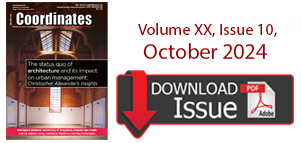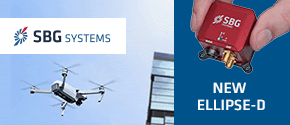
Location Base Services (LBS) is service mechanisms that provides information about the location and take advantage of the location. Global Positioning System (GPS) is one of Devices that inform the position. Mobile phone GPS has the advantage because they can be used also as a means of communication and the completeness of the camera (photo and video) resolution good enough to take photos that have coordinates ((Geo)tagging photo) and can be sent directly to the office for more information .

National Data Sharing and Accessibility Policy (NDSAP) is announced by the Department of Science and Technology (DST), Government of India in May 2011. This is certainly a bold step in terms of providing the information proactively as Indians have a constitutional backup for the right to information through the Right to Information Act 2005. The NDSAP talks about sharable data and non-sharable data (negative list). The negative list is that which includes the data that is not sharable and would not be available on the public domain. Section 8 and 9 of the Right to Information Act, 2005, the Information Technology Act, 2000, and Right to Privacy upheld by the Honourable Supreme Court of India in its various judgments, will be the guiding factors preparing the negative list. The metadata of the sharable data will be available on a portal (www.data.gov.in).

The Survey Department of Brunei Darussalam, with the collaboration of the Universiti Teknologi Malaysia (UTM), has carried out a study on the establishment of a new geodetic framework for the country. A new geocentric datum for Brunei Darussalam 2009 (GDBD2009) was established using GPS space geodetic technology based on the ITRF2005 reference frame. The GDBD2009 is related to ITRF2005 through the inclusion of the 8 GPS stations of the Brunei Darussalam Zero Order Network and have been processed together with more than fifty IGS stations around the world. The realization of GDBD2009 requires the determination of a new datum transformation and map projection scheme. A new set of transformation parameters to be use in converting from the existing local datum to the new GDBD2009 has been computed. The implication of this new datum on the existing cadastral and mapping practices, various GPS non-mapping applications, and the GIS/LIS related applications are taken into consideration.

Surveying education has been ‘playing’ catch up with changes in the surveying/geomatics industry and some individuals are of the opinion that the lag is substantial and demands immediate attention. Not only has technology impacted the surveying industry but the modernisation brought on by information and computer technologies has considerably impacted educational methods used in surveying/geomatics programmes. This paper examines how selected surveying/geomatics programmes address the issue of making their courses relevant to industry needs, student characteristics and one particular trend within higher education. The discussion is based on empirical data from a research that involved fifteen surveying/geomatics programmes from thirteen countries. The study investigated curriculum architecture and pedagogical alternatives within the discipline and the impact these have on students’ preparedness for work.
UniStrong holds 40 pc GIS market share in China: Beijing UniStrong Science & Technology Co. Ltd. holds approximately 40 percent GIS market share in China, according to a report by Orient Securities Company Ltd. In next five years, the company is poised to do the business of approximately 100 billion yuan (USD 15.6 billion), China Daily reported.
50th Space Wing gains control of newest GPS Satellite: The 50th Space Wing’s 2nd Space Operations Squadron accepted command and control of the second Global Positioning System Block IIF satellite. The Space and Missile Systems Center’s GPS Directorate, located at Los Angeles Air Force Base, remained in control of the satellite during a 30-day on-orbit checkout period before the hand-off to 2 SOPS. The next-generation GPS IIF satellites built by Boeing will provide improved accuracy through advanced atomic clocks, a longer design life than legacy GPS satellites, and a new third civil signal, L5 that will eventually benefit commercial aviation and safety-of-life applications
The United Nations Economic and Social Council (ECOSOC) voted to establish a committee of experts on global geospatial information management to coordinate international dialogue on spatial data infrastructures and enhance cooperation in that field. According to the latest report of the Secretary-General on global geospatial information management, the rapid technological advances in geospatial information and related technologies have made this kind of information readily available.
The Space Applications Centre in Ahmedabad of the Department of Space of the Government of India recently selected the NavX®‐NCS Professional, a multi‐constellation and multi‐frequency GNSS RF navigation constellation simulator from IFEN GmbH, as the new reference simulator for its IRNSS development and testing. The IRNSS payload system engineering group of the Space Applications Centre (SAC) in
Spatial energy continues global expansion with announcement of European subsidiary:
Spatial Energy has announced the opening of a European subsidiary at the 2011 EAGE (European Association of Geoscientists and Engineers) Conference & Exhibition in Vienna, Austria. With increased interest in oil and gas exploration and production, including activity in Africa, as well as in shale gas plays in Eastern and Western Europe, Spatial Energy made the strategic decision to focus on building and strengthening relationships with key EAME energy companies.








 (5.00 out of 5)
(5.00 out of 5)